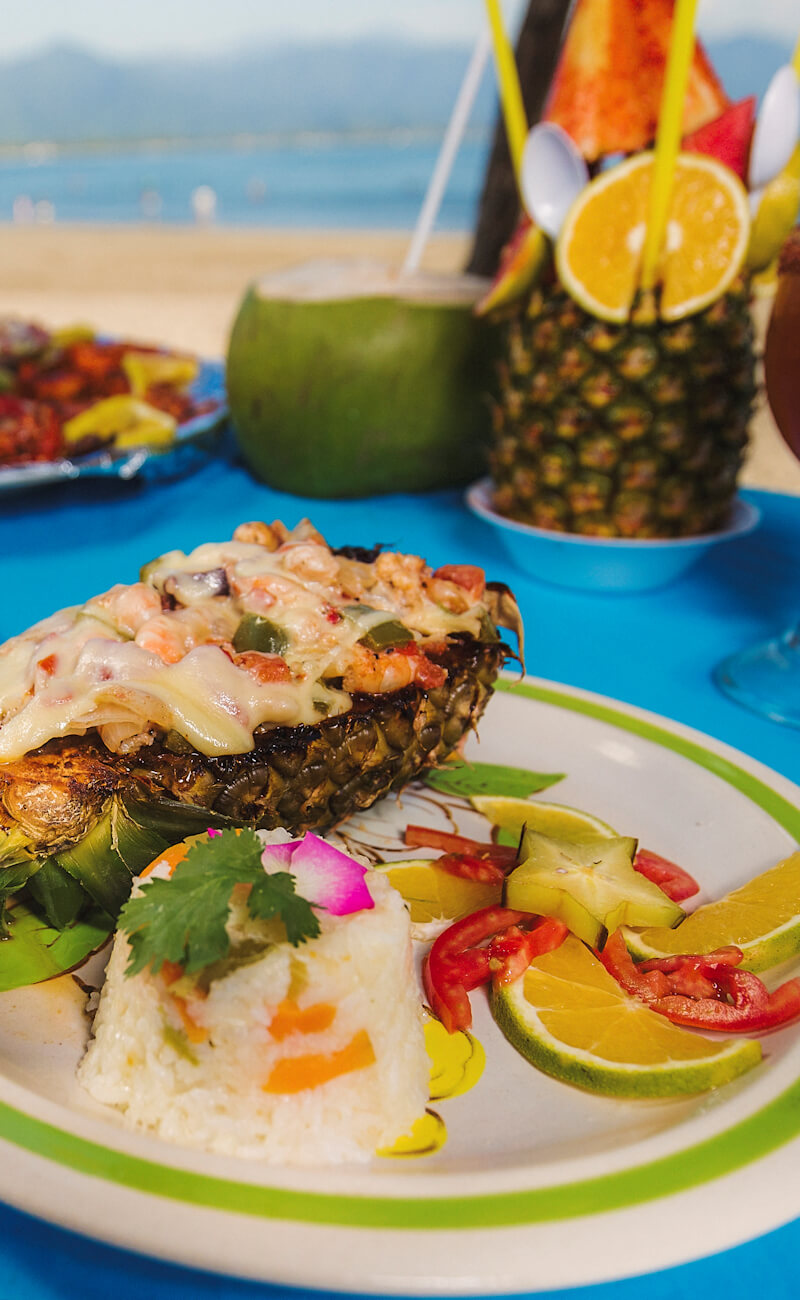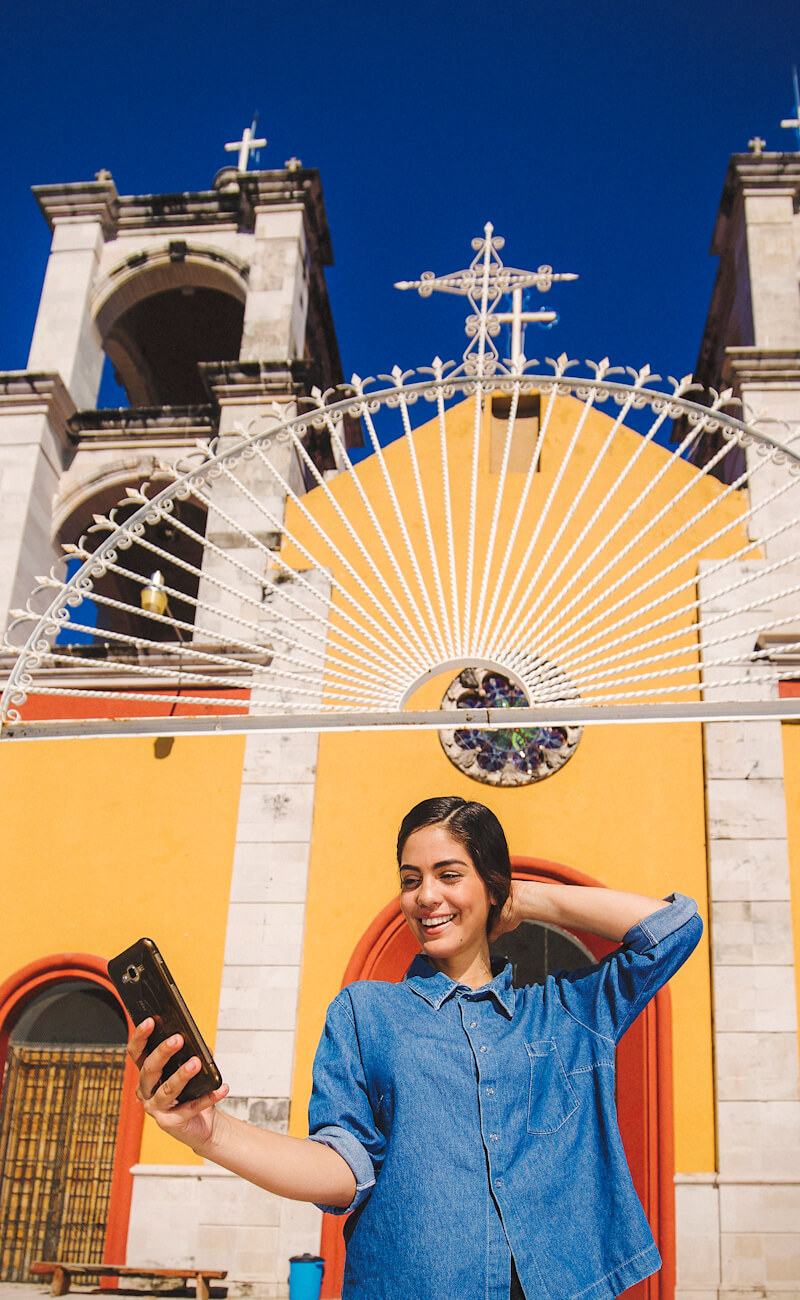San Blas is a colorful port with old monuments of colonial and contemporary architecture. This historic port was the place where large ships were built and the starting point for Fray Junípero Serra to evangelize the Californias. In fact, it was considered one of the most important ports in New Spain in the 18th century. Visiting San Blas is transporting yourself to another time, since when you walk through its streets you can relive past times in the middle of the warm provincial atmosphere. It is currently considered one of the tourist sites that still maintains its ecological environment with estuaries, marshes, mangroves and hundreds of birds. In the center of town you can buy a wide variety of indigenous handicrafts from the region.
Exaduana Maritima, was erected in the 19th century with the purpose of controlling the traffic of goods arriving at the port. Currently, this building, which is located near the pier, is used as a House of Culture.
The Cerro de San Basilio is also known as the Cerro de la Contaduría, this is due to the buildings that are found there, considered some of the most important colonial vestiges on the Mexican Pacific coast. On this hill is the old San Blas Fort, also known as the Accounts Office (currently semi-restored) and the Church of Nuestra Señora del Rosario "La Marinera" dating from 1769.
San Blas Fort, also known as the San Blas Accounting Office, this building dates from 1760 and was built to protect the port from constant attacks by pirates. It consists of high and thick stone walls that border the hill of San Basilio. The construction has small windows from where you can see splendid panoramic views of San Blas.
Currently it has been restored and converted into a community museum where the history of the place is discussed since, in addition to protecting against pirates, it was the scene of important battles during the War of Independence and was also the place where some battles during the American invasion in 1847.
The museum also exhibits some archaeological pieces and pieces from the boats that arrived at the port.
Church of Our Lady of the Rosary “La Marinera”
Built in 1769, it is called "La Marinera", this name is due to the fact that sailors came to this temple asking for protection for the trips they made to Las Californias or even to the Philippines. Over time the building was affected by natural disasters and armed conflicts, for which reason it suffered significant deterioration, until it was completely abandoned at the end of the 19th century.However, in recent years its restoration has been sought due to its historical and religious value.
San Blas Pier, this quiet port has a beautiful and modern pier. Here you can walk and enjoy the tranquility that San Blas offers. It is also a place where fishing is practiced. From the pier you have a spectacular panoramic view of the Matanchén Bay. It is made of specially treated wood and is 165 m long. It has railings on its sides which makes it very safe. At night it has excellent lighting so night walks are very pleasant.
Piedra Blanca
It is a rock formation just off the coast of San Blas, according to the Wixarika worldview, this natural monument was the first solid object to form on the planet and they call it Tatei Haramara. It is a place where pilgrimages continue to be made and at its top there is an image of Our Lady of the Rosary, also known as La Marinera.
Kiekari Crocodile Farm, its name is a Huichol word meaning “community” and it is located among the Tovara mangroves. It houses several river and swamp crocodiles, but you can also see some other animals such as macaws, coatis, jaguars, and white-tailed deer, among others. It is an opportunity to learn more about the fauna of the region and the tours are always carried out accompanied by an expert.
Matachén Bay, where a farming center for six different species of shrimp and clams is located; Actually, it is a pier with a small dock where boats leave to visit the San Cristóbal estuary. However, the great attraction of the place is reserved for surfers; A few minutes from Matachén is Las Islitas beach, registered in the Guinness Book of Records as the producer of the waves.
Playa los Cocos, it is a vacation area with beach options for all tastes. You can find both quiet and secluded beaches for those who want to forget about the usual problems of big cities and stay a few days in eco-style hotels, or large, luxurious and exclusive hotel complexes. One can spend a day of pleasant recreation in the place, walking on the beach, using the pool and savoring pizza or appetizers prepared with seafood in the rustic restaurants in the area.
















